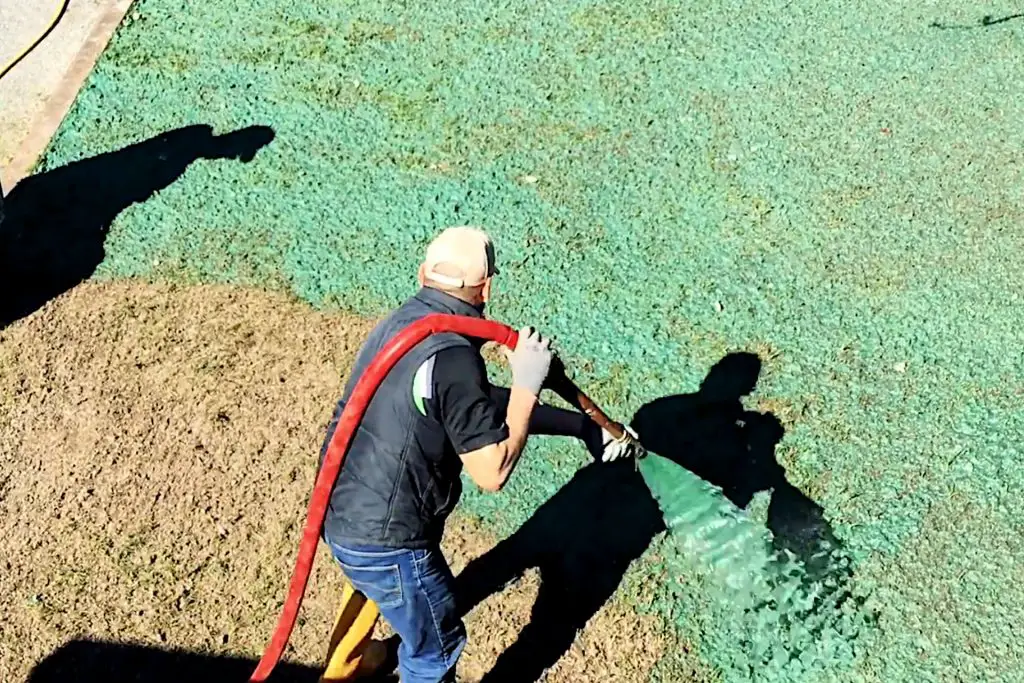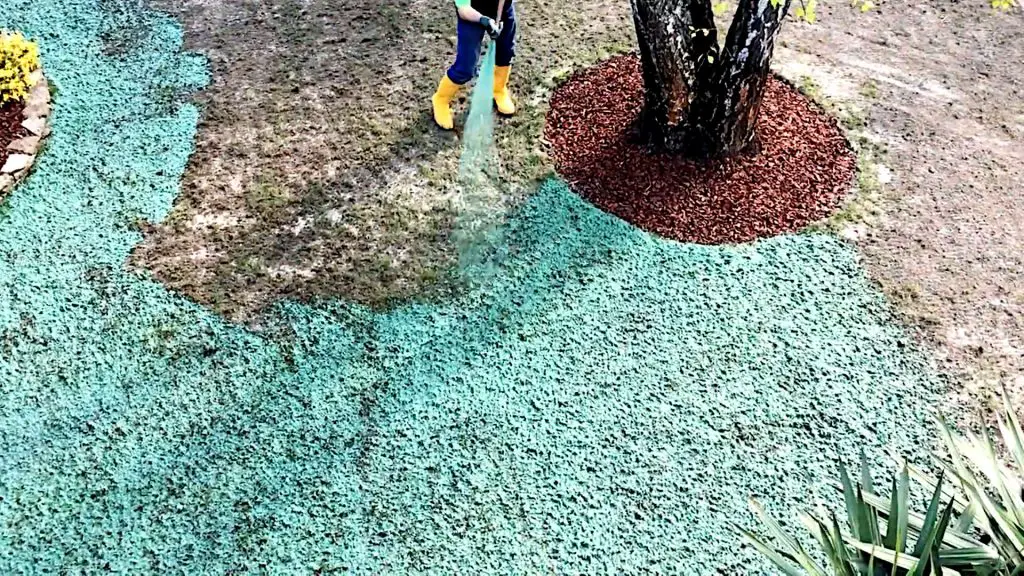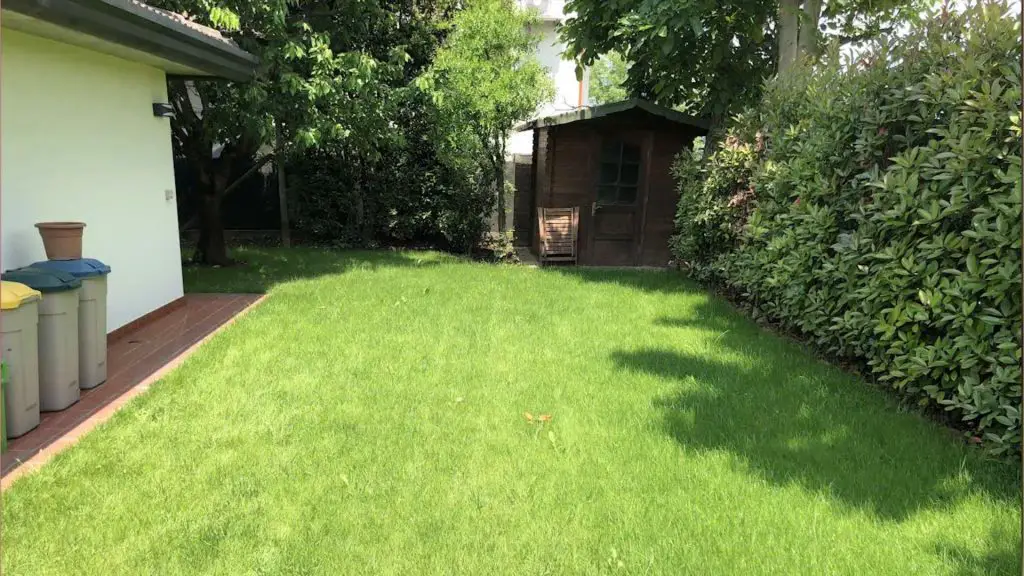Can You Hydroseed an Existing Lawn? | Does Hydroseeding Kill the Existing Lawn
As a way of putting down a new lawn, hydroseeding is one of the most efficient and cost-effective ways of doing so. Being so, leads to the question as to whether or not you can hydroseed over an existing lawn?
There is a lot misleading advice as to whether you can hydroseed over an existing lawn with some arguing that you shouldn’t. This is wrong advice and the definitive answer is that yes, you can hydroseed over an existing lawn. Indeed, if carried out properly it can be one of the simplest and best ways to overseed and revive an existing lawn.
Having said that however, for the process to be successful and produce a quality revived lawn there are a number adjustments to the process in terms of preparation and application need to be employed and we shall look at these in detail.
Where Did the Misadvice Come From?

Whilst, as we have said, hydroseeding over an existing lawn is a perfectly good way of overseeding and reviving a tired lawn, there are adjustments to the process, in terms of preparation and application, that need to be employed. It is these adjustments that ensure that you get the best possible results, rather than potential failure, and it is from here that some of the confusion arises.
The hydroseeding process involves laying a thick blanket of slurry (the hydroseed mix) over the target ground. Herein lies the main issue. The thicknesses of the slurry blanket that you would lay can adversely affect existing grass if it is too thick. This is because if this blanket is too thick it can affect the ground temperature and suffocate the existing grass.
It is easy to see how this could lead some to the conclusion that hydroseeding will kill or damage the existing lawn. However, the solution is to reduce the thickness of the mulch that you spray. Doing this should alleviate the possibilities of killing or damaging existing grass and open up the benefits of hydroseeding to reviving and filling in subsisting lawns.
Hydroseeding Over Existing Lawn
To successfully hydroseed over your current lawn certain adjustments need to be made to the process that would ordinarily be employed when applied to bare soil. We have already mentioned that thickness is an important issue but so is ground preparation.
Hydroseeding Ground Preparation for Existing Lawns
If you are going to have a successfully finished lawn from the hydroseeding process, much the same as with dry seeding ground preparation is important. There are certain changes in the preparation for hydroseeding over an existing lawn, as compared to hydroseeding over the bare ground with managing debris, dealing with invasive species and soil decompaction the most important factors to keep in mind.
Managing of Debris
There is a good chance that your current lawn is free of rocks and sticks. This is a regular part of most effective lawn-care plans, but any residual material must be removed. The clearer the ground the better the coverage and the better chance the seed has of easily establishing itself.
Getting Rid of Invading Species
Lawns are prone to weeds and If there are weeds, they will need to be pulled out by hand or with a weed whacker. If you have regularly maintained your lawn then weeding is likely to have been part of your process. What you want to avoid is using chemical weedkillers as residual chemicals in the soil might impact seed establishment.
Lawn Aeration and Scarification
Again the process here would be the same as dry seeding. Aeration and scarification of the soil are essential before applying hydroseed.
Aeration removes compacted soil from the root zone, allowing more oxygen and nutrients to reach the roots. This will improve the health of the plants.
After aerating, you should scarify the grass that was already there. Removal of thatch and moss is accomplished by this method. When the slurry is sprayed, the original grass patch may seem to be bare, but the seeds will have a better chance of contacting the soil and will fill in nicely.
The newly laid seeds are more likely to thrive on a lawn that has gone through both of these preparatory processes.
Moderating the Mulch Thickness for Hydroseeding Existing Lawns
There are also various other factors at play including the climate and the seed type. Different seeds prefer different planting depths and this also needs to be taken into account
Much thickness varies depending on grass type and prevailing conditions. Generally, you are likely to be using around 1,500-3000lbs of mulch per acre. When you are looking to overseed you would reduce this by around a third so you would instead be employing 1000-2000lbs per acre.
By reducing the mulch thickness by around a third you prevent the mulch from suffocating the original grass allowing it to be able to grow through it. Of course, the exact amount will vary from project to project but a reduction of about a third in thickness is a good rule of thumb.
What Are the Benefits of Hydroseeding as An Overseeding Process

One of the great advantages of hydroseeding is the flexible nature of the process. Almost irrespective of the terrain you should be able to successfully hydroseed.
One less obvious benefit is cost. Hydroseeding is not an expensive process. If, using contractors, it is on par with dry seeding costs, although, of course, if you yourself were doing the dry seeding then this would be cheaper.
Hydroseeding usually results in a far more even distribution of seed and no bare areas, which can sometimes occur with dry seeding. In addition, the hydroseeding process itself kick-starts the seed germination, meaning that using hydroseeding should help the grass establish more quickly than dry seeding.
Problems that Can Arise Using Hydroseeding as An Overseeding Process
Most of the problems that can arise hydroseeding over your subsisting lawn are also problems that you can encounter using dry seeding methods to overseed.
The obvious issues remain proper ground preparation and applying the mulch at the right thickness so as not to damage the existing grass. In addition, using the right seed mix for the climate is also crucial. If you are using an outside contractor then these shouldn’t be problems but if doing DIY hydroseeding they need to be carefully considered to avoid failure.
Other issues include the weather. If you hydroseed and then you get prolonged or heavy downpours then there is a chance the seed will wash away. This can be somewhat mitigated by using tackifiers and locking fibres in the mix.
One overlooked issue can be as simple as access. The slurry is prayed from a tank usually mounted on a track. If site access is narrow or difficult then you may not be able to actually reach the target area.
Summary | Can You Hydroseed an Existing Lawn?
Hydroseeding an existing lawn is probably one of the best and most effective ways of overseeding to revive and fill in your current lawn. Because of the flexibility of the process, it can be adapted to the prevailing conditions of the site. In addition, the process allows you to add tackifiers and mulch that uses locking fibres that can prevent seed from being washed away.
Unless you lay down a thick mulch you are unlikely to kill the existing grass. Using a thinner mulch, preparing your target area properly, and employing the right seed and tackifier will give you the best results.

If done correctly hydroseeding will not kill an existing lawn instead provide you with a lush rich, even carpet of grass that would be difficult to achieve using a more conventional overseeding process.
Commonly Asked Questions
Is hydroseeding effective for thin grass?
Yes, if you have thin or grass or bare patches hydroseeding is an excellent way of overseeding and reviving a lawn.
Is hydroseeding safe for dogs and other pets?
Yes, hydroseeding is safe for dogs and other pets at it is generally non-toxic. However, with certain mixes and the actual application process itself, precautions should be taken.
